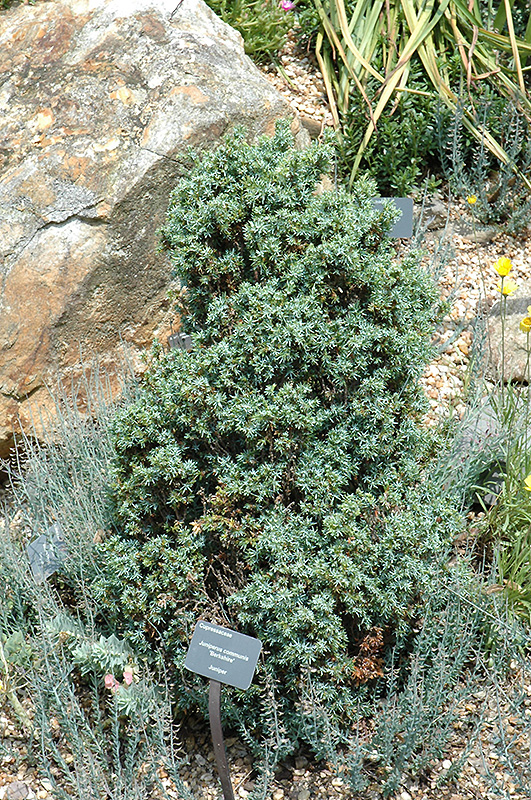>> Home
Berkshire Juniper
Juniperus communis 'Berkshire'
Height: 12 inches
Spread: 18 inches
Sunlight:
![]()
Hardiness Zone: 2b
Description:
An exceptional dwarf shrub for the discerning garden collection, with fine steel blue needles on reddish stems, very densely mounded and extremely slow growing; an excellent choice for rock gardens and border edging
Ornamental Features
Berkshire Juniper is a dwarf conifer which is primarily valued in the garden for its interestingly mounded form. It has attractive steel blue foliage with silver stripes. The needles are highly ornamental and turn coppery-bronze in the fall, which persists throughout the winter. The brick red stems can be quite attractive.
Landscape Attributes
Berkshire Juniper is a dense multi-stemmed evergreen shrub with a mounded form. It lends an extremely fine and delicate texture to the landscape composition which should be used to full effect.
This is a relatively low maintenance shrub, and is best pruned in late winter once the threat of extreme cold has passed. It has no significant negative characteristics.
Berkshire Juniper is recommended for the following landscape applications;
- Mass Planting
- Rock/Alpine Gardens
- Border Edging
- General Garden Use
Planting & Growing
Berkshire Juniper will grow to be about 12 inches tall at maturity, with a spread of 18 inches. It tends to fill out right to the ground and therefore doesn't necessarily require facer plants in front. It grows at a slow rate, and under ideal conditions can be expected to live for approximately 30 years.
This shrub should only be grown in full sunlight. It is very adaptable to both dry and moist growing conditions, but will not tolerate any standing water. It is considered to be drought-tolerant, and thus makes an ideal choice for a low-water garden or xeriscape application. It is not particular as to soil type or pH. It is highly tolerant of urban pollution and will even thrive in inner city environments. This is a selection of a native North American species.
